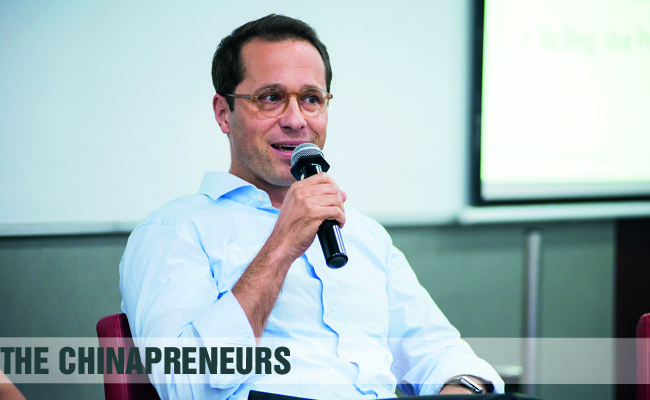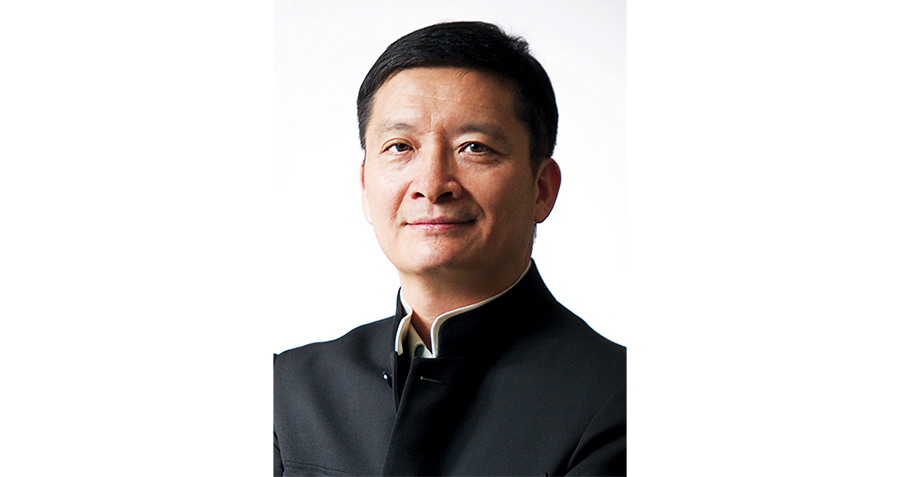Miko Wormuth, CEO of TWICE Fashion Accessories, on what it takes to build a business from scratch in China and the challenges of operating on e-commerce platforms like Taobao and Tmall.
Unlike a lot of other categories, the fashion accessories market in China is still at a nascent stage, but that doesn’t mean that it is an easy segment to compete in. TWICE Fashion Accessories, a multi-category fashion accessory retail brand, jumped into uncharted waters when it started its journey in 2007. Eight years down the line, TWICE has built 30 stores in eight cities across China, including Beijing, Tianjin and Chongqing and very soon, it will open stores in Chengdu and Changsha. Among its 30 brick and mortar stores, 20 are operated by TWICE itself while the rest are franchised. According to its German co-founder Mirko Wormuth, TWICE aims to be China’s No.1 top-of-mind fashion accessory brand.
Wormuth believes that even though the market is complex, there is a lot of potential for his business in the Chinese market. “China is an incredibly large market and it offers so many opportunities… The focus is on China and that is something you want to get right,” says the lawyer turned entrepreneur.
So how hard it is to build a business from zero in China, especially when the category itself is new and copycats are plenty? How do you convince customers to buy? How do you manage franchisees? And most important, how should a brand navigate China’s tricky e-commerce environment where the emphasis is on lower prices?
In this interview with CKGSB Knowledge, Wormuth, who recently spoke at an event on China’s e-commerce explosion, shares what he learnt as an entrepreneur in China.
Q. What are the unique dynamics of the accessory market segment in China?
A. Here are some words of wisdom from an entrepreneur. As they always say, the really rich entrepreneurs don’t have to be super smart. A lot of them just have the right idea [at] the right time and the right place.
I would say, we started possibly too early because fashion accessories was a new concept. It wasn’t something that was already naturally happening in the market in terms of demand. When you look at the European market or the US market, [accessories] are everywhere. So when I opened [TWICE] in 2007, it wasn’t such an easy proposition. Today we can look back and say we are the first ones. Lots of others have tried in between and they failed. Some of them are still standing, but barely. We actually now are going from strength to strength but in terms of dynamics, it has been a very slowly developing curve where now it is about to break through.
Q. Did you encounter any China-specific challenges when you were just starting?
A. Yes, I think the major one is copying, and it’s also adjusting, adapting and changing [in a way] that [it] actually leads to something new. [Also,] in France, Italy, New Zealand and Australia, the girls know what they want. In China you can’t do that. There is so much of advice-giving, helping and introducing going on. You have to spend a lot of time on training your store staff to deliver that, especially when accessorizing is not something that people are totally familiar with.
In the beginning, we did lots of in-store research and watched customers. There were many girls who [came and saw the products] but then walked away. They were not confident enough. If you don’t catch them, help them and tell them the ‘how-to’, things are going to be very difficult. It’s not that easy. You have to train some different muscles.
Q. You have a mix of own stores and franchisee stores. How do you maintain the same quality and image of the brand across the board?
A. When we pick our franchisees, we go through several rounds of interviews [on] funding, management experience, and also their local networks because they have to get into really good locations in the best malls in the cities they are in. At the end of the day, [the franchise partner] needs to have that kind of guanxi (connections) in the local market to secure the best store site.
When talking about quality consistency, every franchise store is designed, assembled, and fitted out by us. In a sense, you could look at it as an own store, with the only exception that once it opens, we are not going to be standing inside but the franchisee’s team [will be there]. Prior to opening, they should have been to our headquarters in Beijing and been trained.
In the end, it’s really all about doing spot checks and regular checks on your franchisees. Sometimes you show up announced and sometimes you show up unannounced. It’s really about checking all the time. That’s the only way to keep up the quality and consistency of the brand.
Q. Do you have a preference of opening stores in tier 1 cities over tier 2 or tier 3 cities in China?
A. No. For us, looking at what’s going on in Beijing and Shanghai [makes us feel] you don’t want to be here, because it [has become] too expensive. We have eight stores in Beijing and actually most of them we operate profitably, but less and less so. As a trend, I would say, sure you need to have a presence in Beijing and Shanghai, ideally in both, but then I would say, go down to second-tier cities as fast as you can.
The downside of that is the purchasing power is not quite there yet. But even though you operate at a lower revenue level, you’re still more profitable in second-tier or third-tier cities. At the end of the day, it’s really about net profit contribution.
Q. Are you seeing any competition in the accessories segment?
A. There have been a couple of copycats. People see TWICE in the mall and sometimes they know how much you make in terms of revenue, and suddenly there are these copycats. For them, the problem was always that the model looks so easy. In China, most of this kind of merchandise is manufactured in China, so you are really close to the source. ‘Oh, I can get this stuff’: that’s [what they think]. [There is] a little bit of naiveté there. So they start and over time, though initially successful, they kind of disappear. So copying in China is always a big threat.
I think in China, you can’t even think about stopping [competition]. It’s always developing and especially with the pressure from e-commerce today, at the shopping mall [the customers] always want the tiyan (experience). What do you offer and how do you make people buy at your store vis-a-vis buying something, maybe, even cheaper on Taobao. The pressure is ongoing and it means [that] everyone in offline retail [has] to do better [with] each store they open.
Q. How did you go about branding?
A. This is something that we especially learned a lot about. China is really weak when it comes to the [branding] area, my personal journey included. [It is] because ‘product’ comes so easily to China because of the manufacturing background, because of Taobao and lots of other reasons as well. However, ‘branding’ is, in a sense, story-telling.
You can go to the website, that’s the No.1 thing. Then I always feel that if you come to our store, you like the product and you are curious, [and] our store staff is also trained on the brand. It’s also what I tell a lot when I’m dealing with people and businesses that want to work with us. If you want to know, then you can know, but unfortunately the average customer is not so interested in the brand story.
Q. E-commerce is changing the way consumers shop these days, especially here in China. You mention that Taobao and Tmall is a “hard world”. Why?
[pullquote]What I’m trying to say is that [Taobao and Tmall have] overreaching power, they have all the traffic. If you want to do e-commerce in China, you have got to be there. Otherwise, you’ll lose 86% of the market.[/pullquote]A. It’s like a monopoly. Let me put it this way: in any other countries, what you do is you open your own website and that’s where people go look at products and buy… What I’m trying to say is that [Taobao and Tmall have] overreaching power, they have all the traffic. If you want to do e-commerce in China, you have got to be there. Otherwise, you’ll lose 86% of the market.
Taobao and Tmall are built as mono-category worlds. If you go to one store, it’s mostly one product category, whereas TWICE is a cross-category player. If they put me in the jewelry category and people want bags, they can’t find us. That’s a huge drawback for us. We cannot [solve this with] advertising because you can only get these in the category you are in. I can only push jewelry in the jewelry section. All the other things become ‘orphans’. For us, that’s a major difficulty.
The other difficulty we have is that over the years, our price point has moved up considerably. On Taobao and Tmall, RMB 100 to 200 is like your best bet of getting a very strong volume. And we aren’t in that bracket. If you are outside of that bracket by a lot, the only thing that can save you, and by that I mean you can still make some meaningful revenue, is when you are a famous brand. But we aren’t that either. It immediately creates a conflict between my Taobao store and my retail store. I can’t sell [for] a lot less at my Taobao store because then my retail people and my franchisees will say, ‘Mirko, you sell there at RMB 200 but I sell at RMB 400.’ But that’s like the expectation of Taobao. Customers will be like, ‘No, this is Taobao, if RMB 400 is your retail price, then you want at least 50% off.’ But I can’t do that. These are the reasons why I find Taobao and Tmall very difficult to operate as an environment.

















